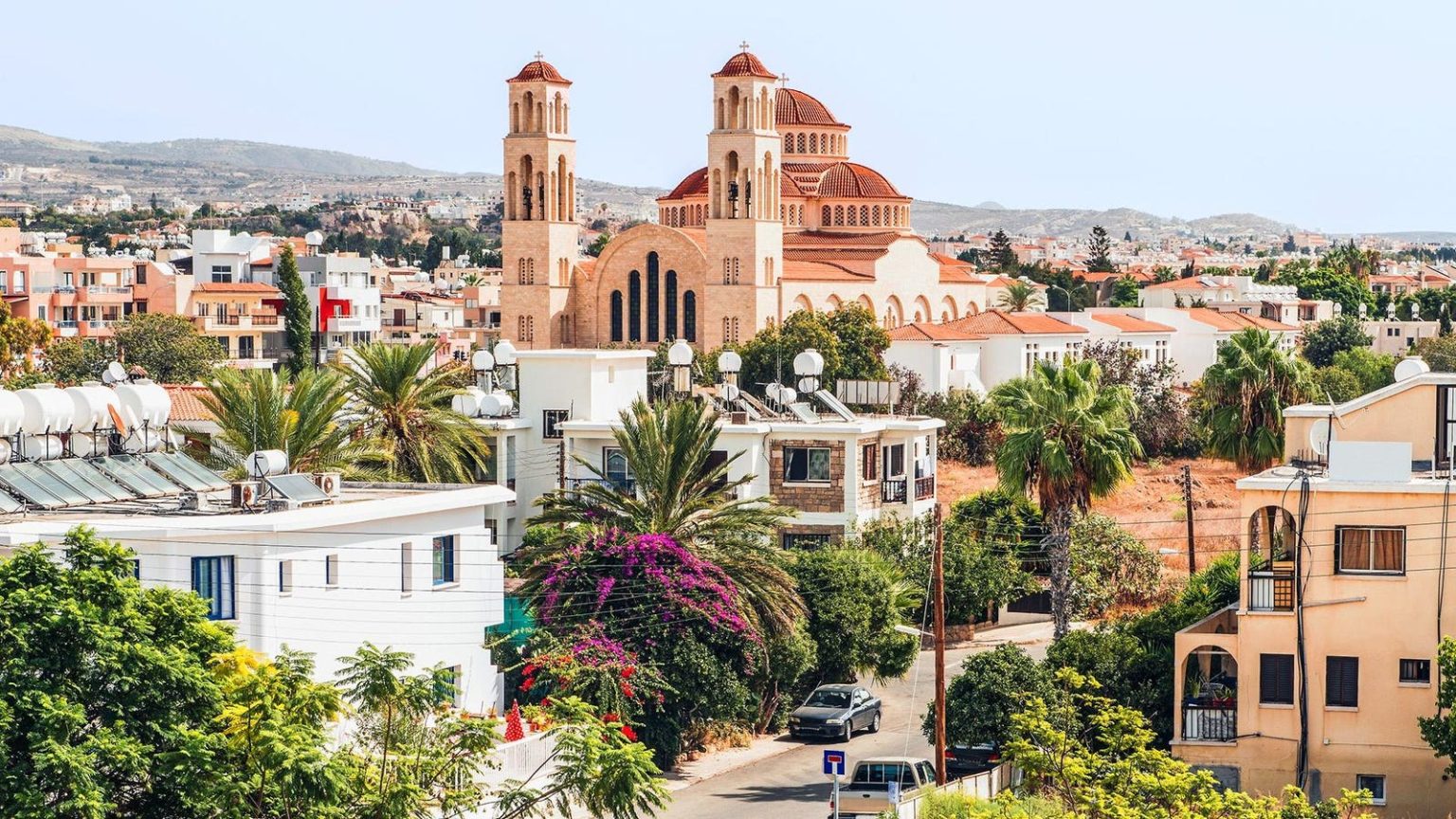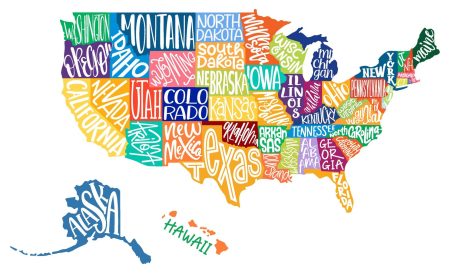Fed up with high living expenses and toxic politics, more Americans are looking to move abroad. Here are the top 24 countries, and 96 recommended spots, based on costs, amenities, health care, climate risk, language, crime, and whether they welcome U.S. retirees.
By William P. Barrett, Senior Contributor
Colleen Kennedy is a child of Southern California. Born, raised and educated there, she spent most of her professional life as a high school special education teacher in Manhattan Beach, a tiny enclave wedged between Los Angeles and the Pacific Ocean. “I love Southern California,” she declares. So where did the divorced, 65-year-old mother of three grown children decide to settle for retirement? Spain. Earlier this month, she moved from Los Angeles to Mijas Costa, along the Costa del Sol west of Marbella, to a rented apartment just a 10-minute walk from the Mediterranean.
Despite the region’s swank reputation, she figures her basic cost of living there will be a third of what it was in Los Angeles. In LA, she rented an apartment in the working-class San Pedro neighborhood near the beach (and the port), that cost about twice as much as her new Spanish digs. Plus, in the U.S. she paid to keep a car, which she won’t need in Mijas Costa thanks to mass transit and stores that are within walking distance. She’ll also be able to make frequent, more affordable trips to other European countries by train. “My money will go so much further,” she says. Kennedy picked Spain after seven years of methodical research and a two-month trip to the Iberian Peninsula in 2022 to check it out. She’s learning Spanish via Zoom from another retired teacher who taught the language and has also retired there.
At last count, there were 701,000 U.S. Social Security recipients living abroad, up 20% over a decade. Yes, most Americans stay in the U.S. for retirement. (These are our latest top 25 picks for the Best Places to Retire domestically.) But an impressive 85% of Americans 65 and older have traveled abroad and the U.S. dollar is at its strongest level since the 1980s, making both foreign travel and a foreign retirement more affordable.
Moreover, in today’s polarized political atmosphere, there’s lots of talk about moving abroad—particularly if the perceived wrong side wins the Presidential election. In a recent poll, a record 34% of Americans said they’d leave the U.S. if they could, with young folks the most likely to pine for a change of country. Yet even 17% of those 55 and older said they’d like to move abroad and they’re the ones who are most able to do so, since many countries welcome those with enough money to live, without taking a local job. Kennedy, for example, submitted the paperwork for a Non-Lucrative Residence Visa—including proof she had pension income of at least $30,000 a year—at Spain’s Los Angeles consulate and was approved for it in just 15 days. It doesn’t allow her to work in Spain but could lead to permanent residency there in five years.
Whether you’re looking for lower costs, attractive scenery, a change in lifestyle and culture or a political escape hatch, moving to another country requires extensive research. To get you started, Forbes presents its list of The Best Places to Retire Abroad. In 2024, which recommends 96 places in 24 different countries in four continents, with five on islands. It’s our first foreign-retirement list since the advent of the Covid-19 pandemic in 2020 and our first that takes into account climate change and natural hazard risk abroad. This is a consideration that Forbes has been incorporating into our domestic Best Places lists for five years. That’s a major reason why The Philippines, on every Forbes foreign retirement list since 2011, is missing. The Pacific Ocean island is No. 1—meaning the worst—among 193 countries on the latest World Risk Report compiled under the auspices of the United Nations. (At No. 20, the U.S. overall is no great shakes either, perhaps another argument to look abroad, but everything is relative.)
Other issues we considered in making our picks include cost of living; ease of getting permission to stay in a country; taxes (sometimes high, always complicated): healthcare quality and costs (Medicare can’t be used abroad, but medical care and insurance are much cheaper outside the U.S.); returning to see relatives (which can be a long slog); crime and political instability; and social isolation, especially if English isn’t widely spoken and you’re not fluent in the dominant language. We describe some of these factors in our country profiles below, which are listed in alphabetical order.
While the final picks on this list reflect our judgment, they are based on data drawn from a variety of sources. Relative cost of living data and serious crime rates worldwide come from numbeo.com. Assessments of natural hazard and climate change risk are drawn from the annual World Risk Report. Tax treatment and treaty information come from websites of various countries, tax professionals and the U.S. Internal Revenue Service. Overview of individual immigration procedures by country comes from a variety of official and unofficial sources. Convenience of return flights to the U.S. is based on information from Google Flights
In addition, we offer extended advice on what to consider if you’re thinking of retiring abroad, here.
A-E
Albania
Mediterranean-climate country with great beaches and vistas
Locations: Tirana, Sarandë, Durrës, Vlorë
Living Costs: Far Lower than U.S. Average
Healthcare: Adequate
Gaining Right To Stay: Relatively Easy
Having long outgrown its isolationist Communist past to become a NATO member, Albania, east across the Adriatic Sea from the heel of Italy, offers a Mediterranean climate, terrific scenery, beaches and mountains. Cost of living is half the U.S. average. The government is stable, and serious crime is low. Healthcare is only adequate, but improving. Private health insurance is a must. English is spoken, but not everywhere. There is no tax treaty with the U.S. barring double taxation, but Albania doesn’t tax pension income of foreigners. A D Long Stay Visa leading to a retirement visa requires a showing of about $13,000 in annual pension income. Flights to the U.S. are long and require a stop or change somewhere. Flooding from storms can be a problem. Popular retirement locations include the capital Tirana, and the coastal towns of Sarandë, Durrës and Vlorë.
Aruba
Caribbean island outside hurricane belt with sunny beaches
Locations: Oranjestad, Palm Beach, Eagle Beach, San Nicolas
Living Costs: Somewhat higher than U.S. average
Healthcare: Good
Gaining Right to Stay: Moderately easy but somewhat pricey
Technically part of the Netherlands, the 21-mile-long island of Aruba with its splendid sunny beaches, wide range of outdoor activities and relaxed culture, sits in the Caribbean just off the coast of Venezuela and outside the historic hurricane belt. Cost of living is 18% higher than the U.S. and local income taxes are high, but a U.S. tax treaty with the Dutch bars double taxation. Healthcare is good, although private insurance is needed. Crime is not a big problem. English is widely spoken. Gaining legal residency is moderately easy but takes time and money, generally requiring the purchase of a residence and proof of annual retirement income of more than $56,000. Miami is a quick three-hour flight. Popular retirement locations include the capital Oranjestad and other coastal towns of Palm Beach, Eagle Beach and San Nicolas.
Austria
Switzerland on the cheap, but knowledge of German required
Locations: Vienna, Innsbruck, Salzburg and Linz
Living Costs: About the same as U.S. average
Healthcare: Excellent
Gaining Right to Stay: Doable but somewhat pricey and must speak German
With “The Sound of Music” mountainous landscapes and rich culture, Austria provides an inviting setting for retirees. Cost of living is about the same as the U.S. average. Serious crime rate is low, and the politics are stable. Health care is excellent, and it’s possible to eventually enroll in the national health system. Natural hazard risk is considered low. Plane rides to the U.S. usually require a stop or change. A long-standing tax treaty between Austria and the U.S. prevents double taxation. Retirees apply for a “settlement permit except gainful employment” document that requires showing about $40,000 a year in retirement income for a couple as well as German language proficiency. There’s a quota on these permits, so local professional help is advised. Possible retirement spots include the capital Vienna, Innsbruck, Salzburg and Linz.
Belize
English-speaking Central American country full of outdoor flora and coral reefs, convenient to the U.S.
Locations: Ambergris Caye, Corozal, Caye Caulker, Placencia
Living Costs: Considerably less than U.S. average
Healthcare: Basic
Gaining Right to Stay: Very easy
The only Central American country with English as the official language, Belize offers retirees a warm, outdoorsy environment, including fishing and barrier reef diving. Cost of living is considerably less than U.S. average. Crime is not a problem except in Belize City. Quality healthcare can be an issue; retirees often return to the U.S.—a two-hour plane ride to Houston—for major medical needs. Hurricanes can be a problem. The politically stable country attracts retirees with a Qualified Retirement Program that offers permanent residency upon showing just $24,000 in annual income, along with a tax exemption on income from outside the country. Popular venues for retirees include Ambergris Caye, an island 35 miles northeast of Belize City; Caye Caulker, another island just off the coast; Corozal, a mainland city on the Atlantic Ocean near Mexico; and Placencia, in the south.
Canada
Convenient to the U.S., but difficult for retirees without family ties to live there full time
Locations: Guelph, Niagara-on-the-Lake, Moncton and Estevan
Living Costs: Slightly less than U.S. average
Healthcare: Good and affordable, plus Medicare option
Gaining Right to Stay: Difficult without family ties, but six-month stays easy
Our Northern neighbor does not exactly encourage U.S. retirees, but there are large numbers of Americans with Canadian family ties who might qualify under existing rules. For those who don’t, Canada lets U.S. citizens stay there a full six months a year, every year, allowing for a part-year retirement option (with no Canadian tax issues). Cost of living is slightly less than the U.S. average, especially outside big cities. English, of course, is an official language. Forest fires can be a problem in the west. Non-residents need private health insurance, but the long common border gives retirees the ability to return to the U.S. and use Medicare. For those able to retire full time up north, Canadian taxes are higher than in the U.S., but a tax treaty prevents double taxation. With most of the population within 90 miles of the U.S. border, return travel is easy. The government is stable, and serious crime rates are low. Popular places include Guelph and Niagara-on-the-Lake in Ontario, Moncton in New Brunswick and Estevan in Saskatchewan.
Chile
Long, thin South American country with stunning features and variety of climates
Locations: Vina del Mar, La Serena, Valparaiso and Santiago
Living Costs: Generally much less than U.S.
Healthcare: Good
Gaining Right to Stay: Very doable, but in steps
Some 2,650 miles from north to south, Chile has a varied range of inviting climates—dry, wet, snowy, subtropical, mountainous, beachy—with a reasonable cost of living. Health care is good and far cheaper than in the U.S. Politics are stable. Crime rate is low. Knowing Spanish is a big plus. Retirees are not taxed on pensions and Social Security income during early years of residency, and there’s a new tax treaty with the U.S. against double taxation. Renewable one-year retirement visas are relatively easy to obtain upon showing of a minimal income source, with permanent residency or even citizenship available after five years. Plane trips back to the U.S. usually require a stop or change and are long. The country is somewhat prone to earthquakes and climate change issues. Among popular retirement venues: the coastal cities of Vina del Mar, La Serena, and Valparaiso, and the capital Santiago.
Colombia
Colorful South American country with warm climate, quick plane rides to U.S.
Locations: Medellín, Pereira, Cali, Cartagena
Living Costs: Much less than U.S. average
Healthcare: Excellent
Gaining Right to Stay: Easy
Having shed its drug cartel history, Columbia, at the northern top of South America, has become a popular expat retirement destination. The politically stable country has terrific weather and scenery, coupled with a low cost of living and affordable quality healthcare. Knowledge of Spanish is very helpful. Crime, though, is still a problem in places. Pensions and Social Security payments are technically subject to Colombian tax, which generally is higher than U.S. rates, and there is no tax treaty against double taxation with the U.S., but the U.S. foreign tax credit affords substantial relief. A renewable three-year retirement visa is relatively easy to get so long as one can show $10,000 in sustainable annual income. Flights back to the U.S. are tolerable and often nonstop (three-and-a half hours to Miami). Parts of the country have climate change exposure to flooding. Inviting locations include the mountain valley cities of Medellín, Pereira and Cali, and the coastal city of Cartagena.
Costa Rica
Central American country with lush tropics and beaches on two oceans
Locations: San José, Central Valley, Atenas, Santa Cruz
Living Costs: Generally less than U.S. average
Healthcare: Good
Gaining Right to Stay: Easy
Costa Rica, with broad beaches on two oceans, lush scenery in between, a tropical climate and a laid-back lifestyle, remains very popular with U.S. retirees, particularly those who love the outdoors. Living costs are generally less than the U.S., the crime rate is low, and politics are stable. Flooding can be an issue. Healthcare in the larger cities is good and cheap, and it’s possible to join the public health system. Knowledge of Spanish is helpful but not essential. A two-year renewable retirement visa requires a showing of just $12,000 in yearly income. The U.S. and Costa Rica do not have a tax treaty avoiding double taxation, but Costa Rica does not tax the foreign income of retirees. Miami and Houston are three hours away by nonstop plane. Inviting venues include the capital San José, the mountain-flanked Central Valley plateau, including Atenas, with spring-like weather year-round, and the Pacific Ocean city of Santa Cruz.
Cyprus
Sunny Mediterranean island nation where English is widely spoken
Locations: Limassol, Paphos, Pyrgos Village, Larnaca
Living Costs: Much less than U.S. average
Healthcare: Good and retirees can quality for public healthcare system
Gaining Right to Stay: Moderately easy
At the eastern end of the Mediterranean, Cyprus (the southern 60% of the 60-mile-wide island not dominated by Turkey) offers a sunny environment with terrific beaches, a Greek culture and a solid reputation for expat retirement. There’s a low cost of living, plus a low crime rate and stable politics. English is widely spoken. Healthcare is good, and permanent residents can qualify for the public healthcare system, although private health insurance is available. The country experiences flooding and wildfires. A tax treaty between Cyprus and the U.S. prevents double taxation. Retirees usually start by applying for a Category F residency permit, which requires a showing of about $15,500 in annual retirement income for two. Buying property costing at least $330,000 can speed up the process. Trips back to the States require a stop or change. Possible places to settle include the coastal cities of Limassol, Paphos, Pyrgos Village and Larnaca.
F-L
France
Essential European experience with great food and wine
Locations: Paris, Bordeaux, Lyon, Carcassonne
Living Costs: Outside of Paris, less than in the U.S.
Healthcare: Excellent and cheap
Gaining Right to Stay: Difficult but doable
Besides the food, France offers retirees high-quality healthcare at low prices, paid through private insurance or out of pocket. Cost of living varies widely but gets a lot cheaper away from Paris, which one can always visit using the extensive train system. Knowledge of some French is essential. Serious crime rates are generally lower than in the States. Politics are currently in flux, but the system is generally stable. With so much in the way of coastline and rivers, flooding can be a problem. Taxes are high, but there is a tax treaty with the U.S. against double taxation, and France does not tax U.S. pension and Social Security income. Getting a renewable Long-Stay Visitor Visa is difficult but doable. An annual retirement income of at least $17,600 for a couple must be shown. Professional advice is recommended. Climate change issues not as pronounced as other places. Most flights back to the U.S. are nonstop. Besides Paris, popular retirement spots for U.S. expats include Bordeaux, in southwestern France; Lyon, near the Alps; and Carcassonne, an ancient fortress town in southeastern France.
Greece
Sunny classical wonderland in the Mediterranean
Locations: Athens, Trikala, Nafplio, Mykonos
Living Costs: Considerably cheaper than U.S. average
Healthcare: Good and affordable
Gaining Right to Stay: Reasonably easy
Sticking out into the Mediterranean on the Balkan Peninsula, sun-drenched Greece with its 6,000 islands presents an appealing environment. Cost of living for most places is considerably below the U.S. average. Health care is considered good and affordable, but private health insurance is required. Knowing some Greek is helpful. Taxes are high, but there is a long-standing tax treaty with the U.S. against double taxation. Most ex-pat retirees start by applying for a renewable Financially Independent Person Visa, requiring a minimum annual income for a couple of $26,000. Professional help is advised. Serious crime rate is low, but vulnerability to climate change and natural hazard risk is significant. Flights to the U.S. are long and require a stop or change somewhere. Popular venues include the capital Athens, Trikala in the north, Nafplio in the south and the island town of Mykonos.
Indonesia
Warm, exotic Southeast Asia country of 17,000 islands
Locations: Bali Island, Jakarta, Lombok, Ubud
Living Costs: Much lower than U.S. average
Healthcare: Adequate and cheap
Gaining Right to Stay: Fairly straightforward, but local help required
A tropical country spread across an astonishing 17,000 islands, Indonesia has increased in popularity as a retirement spot for expats. The country has a low cost of living and distinctive cuisine. Politics are stable, and the serious crime rate is low. English is widely spoken. There is a natural hazard risk from earthquakes, volcanoes and flooding. Healthcare is adequate and affordable, with private health insurance required. A tax treaty with the U.S. blocks double taxation. A retirement visa requires showing of annual income of $36,000 for two, plus a commitment to hire a maid or driver, and must be requested through a third-party agent. Journeys back to the U.S. require a change of planes and often take more than 24 hours. Much of the retirement action centers around cities on the island of Bali, the nearby island of Lombok, the capital, Jakarta and Ubud.
Ireland
Lush European paradise island with English speakers and convenient flights to U.S.
Locations: Dingle, Tralee, Waterford, Bray
Living Costs: Roughly equal to U.S. average
Healthcare: Good, with private insurance
Gaining Right to Stay: Doable, but expensive
With its scenic beauty, the Republic of Ireland offers much to U.S. retirees. English is widely spoken, politics are stable and the serious crime rate is low. There are nonstop flights back to the U.S. from several airports. Cost of living is about that of the U.S., although the countryside is a lot cheaper than Dublin. Flooding can be an issue. Healthcare is good and affordable with private insurance that expat retirees are required to get. Taxes are high, but a tax treaty with the U.S. avoids many double taxation issues. Those with an Irish citizen as a parent or grandparent can get citizenship (and thus the right to unrestricted residency) with a lot of paperwork, but otherwise gaining the Long-Stay D or O Visa for retirement generally requires a substantial annual income of $110,000 for a couple. Inviting locations include the coastal villages of Dingle and Tralee in the southwest, the coastal city of Waterford in the southeast, and the Dublin suburb of Bray.
Italy
Mediterranean culture, climate and food
Locations: Le Marche, Pescara, Palermo, Puglia
Living Costs: Lower than U.S. average
Healthcare: Excellent, with access to public system
Gaining Right to Stay: Relatively easy, but expensive
Besides the culture and the food, Italy offers a cost of living lower than in the U.S., especially outside of big cities. Plus, there’s this rare perk for expat retirees: quick participation in its state-run healthcare system. Politics are stable, and the serious crime rate is lower than in the States. Natural hazard risks include earthquakes, flooding and volcanoes. Italian government policy encourages U.S. retirees by issuing an Elective Residency Visa, which requires showing about $41,000 in annual retirement income. Italy doesn’t tax pensions of government workers, and a tax treaty between the U.S. and Italy helps avoid double taxation. Speaking Italian is definitely helpful. There are plenty of nonstop flights back to the U.S. Popular areas for American retirees include Le Marche and Pescara in the Abruzzo region along the Adriatic Coast; Palermo, in Sicily; and the Puglia Region in the heel.
Latvia
Baltic country with medieval cities and pastoral landscapes
Locations: Riga, Jūurmala, Sigulda, Daugavpils
Living Costs: Lower than U.S. average
Healthcare: Adequate, but private insurance needed
Gaining Right to Stay: Moderately easy
One of the three smallish ex-Soviet states on the Baltic Sea, Latvia quickly joined NATO and has become a developed state with pretty countryside and a culture reflecting both Russian and local heritages. The cost of living is significantly lower than the U.S. average. Healthcare is adequate, but private insurance is needed. Politics are stable, although crime can be a problem in places. While winters are cold, natural hazard risk is considered extremely low. English is somewhat spoken. Lativa offers a renewable five-year retirement visa upon a showing of about $20,000 in annual retirement income for a couple. A tax treaty between the U.S. and Latvia helps guard against double taxation, as does the foreign tax credit on U.S. returns. Flights back to the U.S. require a change somewhere in Europe. Possibilities include the capital Riga, the coastal resort town of Jūurmala, and the inland cities of Sigulda and Daugavpils.
M-O
Malaysia
Affordable Asian culture
Locations: George Town, Kuala Lumpur, Ipoh, Melaka
Living Costs: Much, much lower than U.S. average
Healthcare: Adequate, with private insurance
Gaining Right to Stay: Easy
Malaysia attracts U.S. retirees to its steamy Southeast Asia climate for its low cost of living, outdoor vistas and exotic mix of cultures. English is widely spoken. Crime can be a problem. Flooding is a natural hazard risk. The government makes it easy for U.S. retirees with a Malaysia My Second Home program that includes 10-year visas. It’s even possible to buy real estate. Applicants must show minimum liquid assets of about $120,000 and annual retirement income above $28,000. There’s no tax treaty against double taxation with the U.S., but Malaysia doesn’t tax foreign-source income like pensions. With no direct service, plane trips back to the U.S. can take upwards of 19 hours. Healthcare is adequate, at least in bigger cities, but private health insurance is a must. Expat retirees are found in George Town, on the Strait of Malacca; Kuala Lumpur, the capital; Ipoh, a foodie center, and Melaka, in the south.
Malta
Mediterranean island nation with great beaches
Locations: Valletta, St. Paul’s Bay, Qawra, Gozo
Living Costs: Lower than U.S. average
Healthcare: Excellent and affordable
Gaining Right to Stay: Moderately easy, but pricey
Just off the toe of Italy in the Mediterranean, Malta is a five-island nation with glorious beaches, a temperate climate and low crime. English is an official language. Natural hazard risk is considered low. The government is stable and encourages expat retirees with several visa options, including a five-year retirement renewable visa requiring a $2,700 application fee and a minimum annual retirement income of about $26,000 per couple. Cost of living is less than the U.S. average, and healthcare is excellent and affordable. A tax treaty with the U.S. prevents double taxation. Return air travel to the U.S. requires a stop or change of planes. Retirees are found in the capital, Valletta; and St. Paul’s Bay and Qawra on the main island; and the nearby island of Gozo.
Mexico
Warm climate and U.S. proximity
Locations: San Miguel de Allende, Puerto Vallarta, Tlaxcala, Lake Chapala
Living Costs: Way lower than U.S. average
Healthcare: Adequate and affordable, plus Medicare option
Gaining Right to Stay: Relatively easy
With its long U.S. border, Mexico gives retirees the ability to return to the U.S. and use Medicare (although Mexican healthcare is adequate and inexpensive, especially medications). Cost of living is half the U.S. average. Politics are stable. Serious crime rate is higher in Mexico, but foreigners rarely are victims. Property theft can be a problem, especially in some of the border towns. The western and southern portions are prone to tropical storms. Pluses include a warm climate and friendly folks. Mexican income taxes are comparable to U.S., while a tax treaty between the U.S. and Mexico prevents double taxation. English is spoken, but not widely. Most retirees seek a Mexican Permanent Resident Visa and then a Mexican Permanent Resident Card. Return travel to the U.S. is quick. Popular retiree places include San Miguel de Allende, Puerto Vallarta, Tlaxcala and Lake Chapala.
P-Z
Panama
Florida without the big hurricanes
Locations: Boquete, Panama City, Coronado, David
Living Costs: Much lower than U.S. average
Healthcare: High quality and affordable
Gaining Right to Stay: Very easy
With a sunny, warm climate, Panama is like Florida on the cheap, with affordable, high-quality healthcare and little hurricane exposure, to boot. Cost of living is nearly half that of the U.S. average. Crime rates are low and politics are stable. English is somewhat spoken. Flooding is the biggest natural hazard. The country encourages expat retirees. A Panama Retirement Visa is easy to come by, although it often requires use of a local lawyer. Although there is no tax treaty with the U.S., Panama does not tax the foreign source income of retirees. Plane trips back to the U.S. are quick. Expat retirees are found in Boquete, a town in the highlands with a somewhat cooler climate; Panama City, the capital; Coronado on the Pacific Coast; and the inland city of David.
Portugal
Good climate, low cost of living and European culture
Locations: Algarve region, Lisbon, Cascais, Porto
Living Costs: Much lower than the U.S. average
Healthcare: Good and affordable
Gaining Right to Stay: Relatively easy
On Europe’s Western edge, with a warm but pleasing climate, Portugal has a low cost of living for U.S. retirees and good, affordable healthcare. English is spoken widely enough. Crime rate is low, and politics are stable. Flooding can be an issue. The country encourages retirees who can show yearly income of about $14,000 for a couple, or a $550,000 investment, which can be in property. The usual route is by seeking a renewable D7 Residence Visa. A tax treaty between the U.S. and Portugal avoids double taxation. There is some nonstop plane service to the U.S. Many retirees are drawn to the Algarve area on the Atlantic near Lisbon, the capital; Lisbon itself; Cascais; a suburb of Lisbon; and Porto, in the north.
Slovenia
Stunning European vistas and low cost of living
Locations: Ljubljana, Bled, Piran, Celje
Living Costs: Far less than the U.S. average
Healthcare: Adequate and cheap
Gaining Right to Stay: Moderately easy
Part of the former Yugoslavia, Slovenia offers a wide variety of stunning coastal and mountain scenery. Cost of living is quite reasonable. Politics are stable and the crime rate is low. Healthcare with private insurance is adequate and cheap. Flooding is a natural hazard risk. Renewable one-year temporary resident permits leading to permanent residency after five years are available upon showing of retirement income of about $12,000 a year per couple. A tax treaty between the U.S. and Slovenia avoids double taxation. Trips back to the U.S. are long and require a change or stop. Retirement venues include the capital Ljubljana; the lake resort town of Bled; Piran, on an inlet of the Adratic Sea; and the inland city of Celjie.
Spain
Sunny, exciting European culture
Locations: Costa del Sol, Bilbao, Orange Blossom Coast, Alicante
Living Costs: Much lower than U.S. average
Healthcare: Excellent and cheap
Gaining Right to Stay: Relatively easy
Sunny Spain is much cheaper than the U.S., particularly a few miles away from the gorgeous coasts and big cities. Healthcare is considered excellent. Crime rate is low, and the politics are stable. Natural hazards include forest fires and flooding. The renewable, oddly named Non-Lucrative Residence Visa is relatively easy for a U.S. retiree to get upon a showing of adequate annual income, roughly $39,000 a year for a couple. Spain doesn’t tax pensions of retired expat government workers, and a tax treaty between the U.S. and Spain eliminates many double taxation issues. Knowledge of some Spanish is a must. There are nonstop flights back to the U.S. Inviting venues include the Costa del Sol along the Mediterranean; Bilbao and the Orange Blossom Coast near Barcelona; and Alicante, also on the Mediterranean.
Thailand
Tropical Asian environment
Locations: Chiang Mai, Bangkok, Phuket, Koh Samui
Living Costs: Much lower than U.S. average
Healthcare: Excellent and cheap
Gaining Right to Stay: Easy
Thailand draws flocks of U.S retirees thanks to an exotic Asian culture, a cost of living less than half that of the U.S. and healthcare so excellent and cheap it draws patients from abroad. English is widely spoken. Crime rate is low. Politics are stable. Natural hazard risk includes tsunamis. The O-X retirement visa is easy to obtain upon a showing of about $24,000 in yearly income per couple and another $25,000 in a Thai bank. A tax treaty between the U.S. and Thailand prevents double taxation and also exempts from Thai taxation Social Security and pension payments from the U.S. With no non-stops, plane travel back to the U.S. can take 24 hours or longer. The northern town of Chiang Mai draws retirees, as does the crowded capital of Bangkok, the island of Phuket, and Koh Samui, an island in the Gulf of Thailand.
Uruguay
South American democracy with great beaches
Locations: Punta del Este, Atlántida, Montevideo, Colonia
Living Costs: Much lower than U.S. average
Healthcare: Good and affordable
Gaining Right to Stay: Easy, but not cheap
Located between Argentina and Brazil in the Southern Hemisphere, Uruguay offers nice beaches and permits foreign retirees to use the national healthcare system, although private healthcare and insurance is quite affordable, too. Cost of living is much lower than the U.S. average. Knowledge of some Spanish is helpful. Crime can be an issue. Portions can flood. Long a stable democracy, Uruguay offers retirement visas with a minimum annual income showing of about $18,000 per person and a $100,000 investment in a property. Most foreign income is not taxed, which offsets the lack of a tax treaty against double taxation with the U.S. The climate has four seasons. Closer to the South Pole than to Chicago, Uruguay is a long way from the U.S. With no nonstop service, a plane trip to Miami can be 15 hours. The Atlantic Ocean coastal towns of Punta del Este and Atlántida are popular with retirees, as is the capital, Montevideo, and Colonia, an hour’s ferry ride from Buenos Aires.
MORE FROM FORBES
Read the full article here










